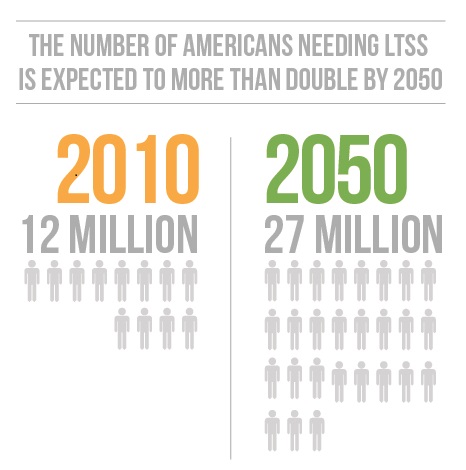Learn effective strategies to protect your parents’ assets from rising nursing home costs. This informative guide explains how Medicaid planning, asset protection trusts, and other legal tools can help families preserve wealth, qualify for care coverage, and plan proactively for long-term care needs.
Recognition for Estate & Trust Planning, Elder Law, Litigation and Tax Law
New York – Pierro, Connor & Strauss, LLC is proud to have six attorneys recognized in the 2026 editions of The Best Lawyers in America® and the Best Lawyers: Ones to Watch® in America.
The awards were announced August 21 by Best Lawyers®, regarded since 1983 as the most credible measure of legal integrity and distinction in the United States. Best Lawyers® lists are compiled based on an exhaustive peer-review evaluation for specific practice areas. Approximately 5% of lawyers in the United States are chosen, reflecting the selectivity and credibility of the results.

2026 Best Lawyers in America® – Capital Region, NY
Louis W. Pierro, Founding Partner is honored for the 19th year in four practice areas: Elder Law, Litigation- Trusts and Estates; Trusts and Estates and Tax Law.
Aaron E. Connor, Managing Partner, is honored in the practice areas of Elder Law, and Litigation -Trusts and Estates. It is Mr. Connor’s 2nd year of recognition by Best Lawyers®.
Arkley L. Mastro, Jr., Senior Counsel, is honored for the 2nd year for his practice in Trusts and Estates.
2026 Best Lawyers in America® – New York, NY
Peter J. Strauss, Senior Counsel, is honored for the 19th year in the practice areas of Elder Law, Litigation- Trusts and Estates; Trusts and Estates.
Anthony K. Khatchoui, Counsel, for Trusts and Estates, and Elder Law.

2026 Best Lawyers: Ones to Watch in America® -practicing fewer than 10 years
Patricia T. Whelan, Associate Attorney, is recognized for the first time by Best Lawyers® as Ones to Watch in America, 2026 Edition, in the fields of Elder Law, and Trusts and Estates. She practices in the Capital Region office.
“This honor reflects not only the commitment of our individual attorneys, but the strength of our entire team in helping families protect what matters most: their loved ones, their legacies, and their futures,” said Pierro.
“This recognition underscores our firm’s unwavering dedication to guiding families through life’s most important transitions with skill, compassion, and integrity,” said Connor.
In 2025, Pierro, Connor & Strauss was recognized for the third consecutive year by Best Lawyers® as National Tier I Law Firm for Elder Law in New York City and the Capital Region.
Pierro, Connor & Strauss, LLC provides trusted counsel to clients in locations that include Albany and the Capital Region, New York City, Garden City, Ronkonkoma, Hudson, and Lake Placid, and also serves clients in New Jersey, Massachusetts, Florida and Hawaii.
For more information or to view awards letters:
Beth Wurtmann
(866)951-PLAN
[email protected]
Planning for our later years is something we all need to think about, yet for LGBTQ+ adults, this process often comes with unique concerns and considerations that many traditional resources don’t address. Understanding these challenges and taking proactive steps can make a significant difference in ensuring dignity, comfort, and quality care as we age.
Success in business requires planning, commitment, and a strategic approach. Many new businesses take at least two or three years to turn a profit and twice as long to truly hit their stride.
If you’ve created a business, you know that success doesn’t happen overnight. But do you know what will happen to your business if something unexpected impacts you or when you decide to step away?
In the complex and frequently changing landscape of health care in the United States, Medicaid stands out as a vital program. Since 1965, it has provided essential coverage to millions of low-income individuals and families. Alongside Medicare, Medicaid serves as a lifeline for those who may otherwise struggle to afford health care services.

Frequently clients realize that a supplemental needs trust is operated by a trustee. Trustees fulfill many responsibilities. They act as investment manager, bookkeeper, distribution manager, benefits advocate, and financial planner. Trustees are in constant contact with the beneficiary and the beneficiary’s caregivers regarding many aspects of the beneficiary’s life such as approving the purchase of a vehicle or even the purchase of a home.
Read moreThe U.S. Senate Committee on Finance recently proposed enhancements to the Achieving a Better Life Experience (ABLE) Act which would increase the amount of money that can be contributed to ABLE accounts. However, advocate groups say the enhancements don’t go far enough.
Read more
On May 22, 2014 for the 19th Annual Elder Law Forum we will once again bring together virtually all of the stakeholders in Long Term Care (LTC) – providers, attorneys, financial advisors, caregivers, administrators, government staff and others – as we share the latest developments in this dynamic, ever changing field. As of this writing there are 175 registrants for the Forum, with each discipline facing challenges as the ever-increasing “senior” baby boomer population continues to make its way into retirement years, turning 65 at a rate of 10,000 a day!
On the financing front, momentum may finally be on our side. There is a growing consensus that no one exclusive solution – public or private – is the answer for all people or all situations. Medicaid Managed Care has finally made its way to us, and a big reason for the gravitation to that model is cost containment, seeking to capitate the State’s cost (see our prior blog entry on Medicaid Managed Care).
The private LTC Insurance industry has struggled as well. Underestimations of the percentage of people keeping their policies over the long term, and the ongoing low interest rate environment have led, by extension, to higher than expected claims experience. The result for consumers has been higher premiums than we’ve ever experienced (on both new policies and some of those that have been in force for some time), tougher underwriting standards that have prevented some people from being able to qualify for LTC Insurance, and a less profitable product that has led some carriers to exit the market.
Also, carriers are moving toward “gender-specific” pricing for their products. That means that women – especially single women and women who apply with a spouse or partner but only the woman is approved for coverage – will pay higher rates than before when rates were the same for men and women.
In spite of all that perceived (or real?) negativity, there are signs of some bright spots in New York State. Although we saw the exodus of a few carriers in recent years, we’ve seen some stability in the remaining carriers in the last 12-24 months. Many people believe the market is going through a similar evolution to the Disability Income Insurance market in the early to mid-1990s. The result of that shift has been a more stable DI market.
In addition, unlike most of the other states in the nation, at least as of press time, here in NY there is currently only one carrier that has rolled out gender-specific pricing. So, there is still time for women to lock in lower rates before the other carriers follow suit.
The other factors affecting rates – interest rates and persistency rates – have also seen a “bottoming out.” Interest rates, for good or for bad, can’t get much lower, lessening the potential susceptibility of policies issued now to future rate increases of the magnitude we’ve seen in some instances. And, the premiums for LTC Insurance now incorporate higher persistency rates, further insulating them – though not protecting them completely – from the possibility of future increases.
Importantly, here in the state of NY, the NYS Partnership for Long Term Care recently enhanced its program with significant results. The Partnership, as you may know, rewards New Yorkers who plan in advance by purchasing a Partnership-certified policy, by providing Medicaid asset protection for those policyholders who exhaust policy benefits and still need care.
The New York State Partnership made two important recent changes that make it possible for a higher percentage of New Yorkers to afford coverage. They rolled out a 2-year plan, and an optional 3.5% compound inflation rider, so that policyholders can purchase a policy that provides total asset protection while keeping the premium affordable. No other state has anything close, and combined with New York’s 20% income tax credit policies are far more affordable now for many people.
Finally, newer generations of products have evolved whereby one can combine life insurance and long-term care insurance into one policy. Doing so may ensure that policyholders have long-term care protection, while also ensuring that the premiums paid – and then some – come back to the policyholder’s heirs in the event the policy is not needed for long-term care. The so-called “Hybrid” policies can offer life insurance benefits, indemnity payments for LTC and a guaranteed return on investment that has attracted a variety of new policyholders, including the affluent, who did not buy traditional LTCI.
We’ll examine what ALL these changes mean to us, as well as to the clients, patients and constituents we serve on May 22 – don’t miss it!
By: Louis W. Pierro, Esq. and Bob Vandy, CLU, ChFC, LUTCF, CLTC – V.P. Marketing at New York & National Long-Term Care Brokers

Healthcare in America is a scandal. The battles fought over the Affordable Care Act have dominated our political landscape, stoking the fires of both the left and the right, with the media that panders to each adding a daily dose of gasoline. A recent article by Michael Fischer in the April 17, 2014 edition of ThinkAdvisor entitled “Retiree Social Security Benefits to be Wiped Out by Healthcare Costs” portends a looming crisis of epic proportions. The article focuses on a new retirement Healthcare Cost Index, created by HealthView Services, which “shows that middle-class Americans are approaching the day when they will have to use their entire Social Security benefit to pay for their healthcare.” As disastrous as the index appears to be, consider this shocking fact: it does not include Long Term Care costs. Our prior blog posts covered 2014 Medicaid Changes in New York (including the rollout of Managed Long-Term Care) and the Current Issues in LTC Insurance. This post will highlight the current efforts in Washington and Albany to craft policies and programs that can serve the needs of our burgeoning population of seniors and people with disabilities, while preserving Medicare, Medicaid, Social Security and the public fisc.
Long-Term Care, for decades the forgotten stepchild of healthcare, has gained significant attention from policymakers of late, as the 78 million Baby Boom generation is now between the ages of 50 and 68 years. Many of the boomers have witnessed the stress on their families and the financial ruin faced by their parents who have failed to prepare for the ruinous expenses of Long-Term Care, and it appears that they are now in a position to do something about it. An author who follows aging issues for Forbes magazine, Howard Gleckman, published an article on April 9, 2014, entitled “Finally, Modest Progress Toward Long-Term Care Financing Reform”.
For the past 19 years, our annual Elder Law Forum has chronicled the policies and programs designed to cover Long-Term Care, and the woeful inadequacy of existing systems to accommodate the aging population. We discussed a program enacted through the Affordable Care Act called the “Class Act”, which as predicted when we first saw the legislation has failed miserably and was repealed in January of 2013. The President then appointed a Long-Term Care Commission, which issued a report that highlighted many of the problems, but offered few solutions. Since that time, as Gleckman reports, “a wide range of private interests including Long-Term Care providers, consumer groups, the insurance industry, and policy analysts seems to be moving toward a broad consensus on how to address this important and difficult issue.” He states that “the solution is likely to include some mix of private insurance and a public safety net beyond Medicaid-the current government program that is the single biggest payer of Long-Term Care services and support.”
We will once again be exploring the concept of a public-private solution to Long-Term Care financing at the 19th Annual Elder Law Forum, and our breakout session led by Gail Holubinka will be dedicated to reviewing reports by LeadingAge (Dan Heim of LeadingAge New York will be one of our presenters), the Bipartisan Policy Center (a Washington based group led by Sen. Bill Frist, Tom Daschle and former Health and Human Services Secretary Tommy Thompson), the Society of Actuaries and others. Panelists Bill Schroth, Brian Johnson and I will present the highlights of each position, and we will then have an opportunity for open dialogue on how to craft an appropriate solution for Long-Term Care. Don’t miss this unique opportunity to immerse yourself in the turbulent seas of aging in New York State!






